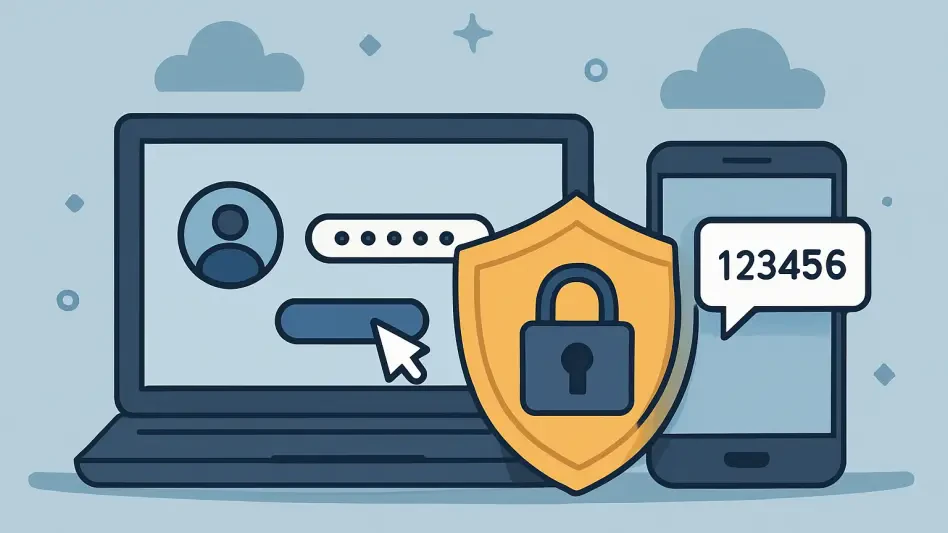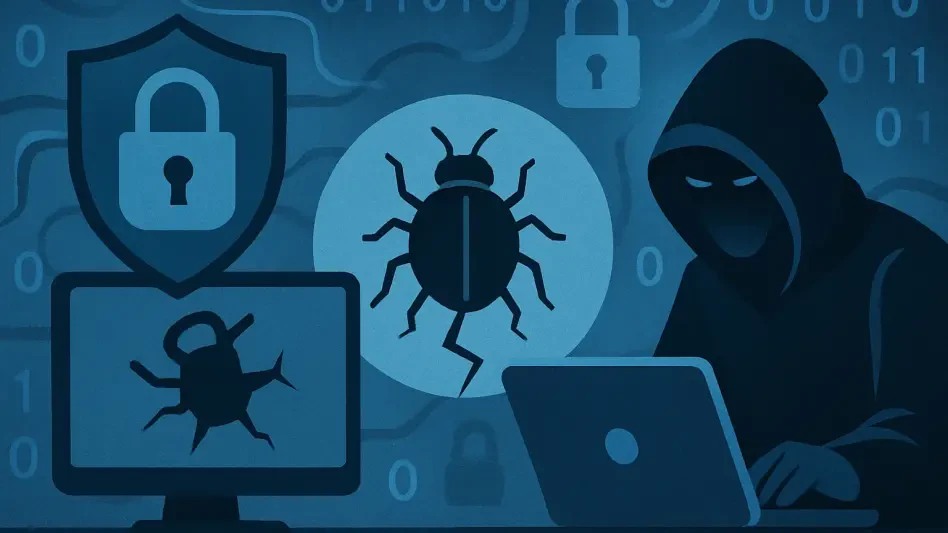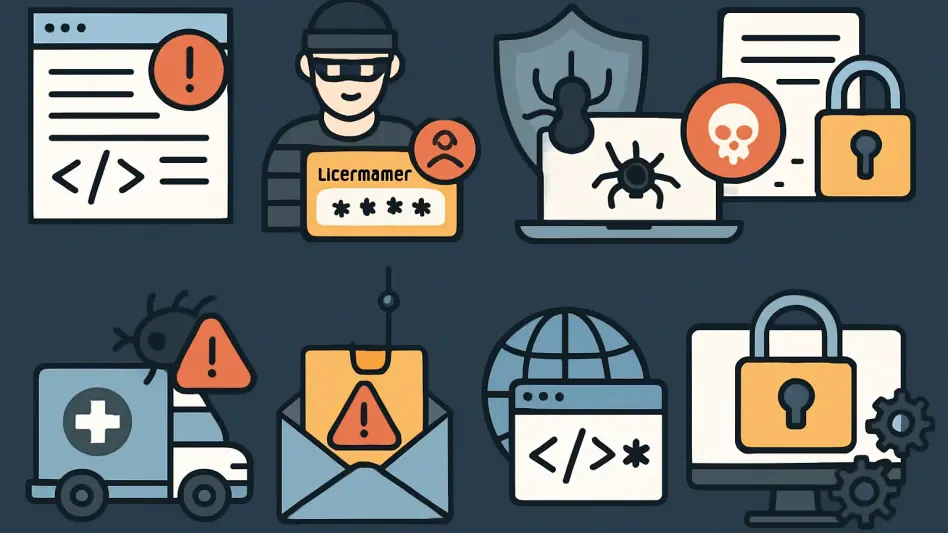In an era where digital security is paramount, two-factor authentication (2FA) has emerged as a cornerstone of online protection, promising to safeguard accounts from unauthorized access by requiring not just a password, but also a secondary form of verification, such as a code sent to a phone or email. Yet, as this security measure becomes ubiquitous across platforms—from banking apps to social media—there’s a growing chorus of frustration among users who find themselves bogged down by its demands. Is this extra layer of defense genuinely fortifying digital lives, or is it creating more obstacles than it prevents? The debate around 2FA isn’t merely technical; it’s deeply personal, touching on how everyday interactions with technology are shaped by systems meant to protect but often irritate. This article aims to dissect the core arguments surrounding 2FA, weighing its purported benefits against the real-world challenges it poses. From exasperating login processes to the risk of catastrophic account lockouts, the discussion will explore whether this widely adopted tool is delivering on its promise or simply piling on unnecessary burdens. As digital reliance grows, striking a balance between security and usability remains a critical challenge, and 2FA sits at the heart of this tension. Let’s delve into the nuances of this polarizing security feature to understand if it truly serves as a help or leans more toward hassle.
Navigating the Maze of Login Challenges
The process of logging into an account should be straightforward, but 2FA often transforms it into a cumbersome ordeal that tests patience. Users frequently find themselves juggling multiple devices or tabs just to retrieve a verification code, whether it’s buried in an email inbox or delayed in a text message. This added complexity can be particularly maddening when time is of the essence, such as during a quick check of a financial app before a transaction deadline. The constant need to switch contexts—grabbing a phone or opening another application—feels less like a security enhancement and more like an arbitrary hurdle. For many, this ritual turns a simple task into a frustrating chore, especially when accessing non-critical services like a recipe app or a casual game. The question arises: does this level of precaution match the actual risk for most accounts, or is it an overreach that alienates users?
Compounding the irritation is the perception that 2FA disproportionately impacts legitimate users rather than the hackers it aims to thwart. The likelihood of someone targeting a personal account for something trivial, like a streaming subscription, is often minimal, yet every user must endure the same rigorous process regardless of context. This blanket approach ignores the varying levels of sensitivity across different platforms, treating all logins as high-stakes scenarios. Critics point out that such a system seems designed more to showcase security theater than to address practical threats, leaving many to wonder if the effort justifies the outcome. When a login feels like a penalty for simply wanting to use a service, the frustration can overshadow any theoretical benefits the system might provide.
Questioning the True Value of Added Protection
Beyond the daily grind of extra steps, a deeper issue looms over 2Fdoes it genuinely bolster security as much as claimed, or does it foster a misleading sense of invulnerability? Some experts suggest that while the mechanism adds a barrier, it can divert attention from more fundamental practices, such as crafting strong, unique passwords or regularly monitoring account activity. If users lean on 2FA as their primary defense, they might neglect these essential habits, leaving other vulnerabilities exposed. This over-reliance could create a dangerous gap, where the focus on a secondary verification overshadows the need for a robust first line of defense, potentially undermining overall safety.
Moreover, the psychological effect of 2FA can be a double-edged sword, instilling confidence that may not be entirely warranted. When users believe their accounts are fully protected by this additional layer, they might take fewer precautions elsewhere, such as securing the email tied to recovery processes. Hackers, aware of this complacency, could exploit weaker entry points that 2FA doesn’t cover, rendering the system less effective than perceived. The core critique here is that 2FA might serve as a comforting illusion rather than a comprehensive solution, prompting a reevaluation of whether its presence truly equates to protection or merely shifts the burden of vigilance elsewhere. This debate challenges the narrative that more security steps automatically translate to better safety.
Battling Unpredictable Delivery Failures
One of the most tangible frustrations with 2FA lies in its dependence on external delivery systems, which often prove unreliable at critical moments. Verification codes sent via SMS can be delayed or lost due to network outages, while emails might languish in spam folders or fail to arrive altogether because of server issues. These hiccups, often outside a user’s control, can block access to vital accounts, turning a supposed safeguard into an unexpected roadblock. Even major tech giants, with their vast resources, struggle to ensure seamless delivery, leaving users stranded when they need access most, such as during urgent work tasks or time-sensitive transactions.
This unpredictability raises significant doubts about the wisdom of tying security to such inconsistent mechanisms. When a carrier glitch or a temporary service disruption can halt access to multiple platforms, the system’s flaws become glaringly apparent, especially for those managing numerous accounts across different services. The risk is amplified for smaller companies or less robust platforms that may lack the infrastructure to handle delivery issues effectively, further exposing users to potential lockouts. Such failures not only erode trust in 2FA as a dependable tool but also highlight a fundamental design flaw: a security measure is only as strong as its weakest link, and delivery systems often prove to be just that.
Dealing with Digital Clutter and Privacy Risks
Every attempt to log in with 2FA generates a flurry of notifications, flooding email inboxes and text threads with codes and alerts that pile up over time. For individuals who strive to maintain an organized digital environment, this incessant stream of messages becomes a persistent annoyance, cluttering spaces meant for meaningful communication. The contrast to earlier, simpler days of online access—when a single password sufficed—feels stark, as users now wade through a deluge of temporary codes just to check a social media feed or update a profile. This digital noise detracts from the user experience, turning routine interactions into a battle against unnecessary distractions.
More concerning than the clutter is the privacy trade-off that 2FA often demands, as users must share personal contact details to receive verification codes. Handing over a phone number or email to various platforms opens the door to potential spam, marketing misuse, or even data breaches if a company’s security is compromised. Reports of users receiving unsolicited messages from the same channels used for 2FA underscore the risk, as blocking these sources to curb junk can inadvertently sever access to accounts. This hidden cost forces a difficult choice between safeguarding personal information and maintaining account security, leaving many to question if the system’s benefits justify the intrusion into their digital autonomy.
Facing the Threat of Irreversible Account Loss
Perhaps the most severe criticism of 2FA centers on the devastating possibility of permanent account lockouts, where users lose access to critical services due to failed recovery processes. When backup options are inaccessible—whether from forgotten details or overly strict verification protocols—the consequences can be dire, affecting everything from professional email accounts to academic resources. Such scenarios aren’t mere inconveniences; they can disrupt livelihoods, forcing individuals to rebuild digital connections from scratch while grappling with the stress of lost data and missed opportunities. The emotional and practical toll of these incidents casts a long shadow over 2FA’s intended purpose.
These real-world experiences of account loss reveal a chilling flaw in the system: a mechanism designed to protect can instead become a gatekeeper that bars entry indefinitely. Stories abound of users trapped in authentication loops, unable to satisfy rigid recovery demands or retrieve codes from defunct contact points, resulting in irretrievable accounts tied to essential parts of life. This potential for catastrophe turns 2FA into a high-stakes gamble, where a single misstep or technical failure can erase years of digital presence. The gravity of such risks prompts a sobering reflection on whether a security tool that carries the power to exclude its own users from their accounts can truly be deemed helpful.
Reflecting on a Path Forward for Digital Security
Looking back, the journey through the challenges of two-factor authentication paints a complex picture of a security tool that aimed high but stumbled in execution. The frustrations of convoluted logins, questionable effectiveness, unreliable delivery, privacy intrusions, and the haunting risk of permanent lockouts underscore a system that often burdens users more than it shields them. These issues, drawn from countless user experiences, highlight a critical disconnect between the intent of 2FA and its real-world impact, sparking a necessary conversation about the balance of safety and accessibility in the digital realm.
Moving forward, the focus should shift toward refining security measures that prioritize both protection and user experience, perhaps through smarter, context-aware systems that adjust authentication demands based on risk levels. Exploring alternatives, such as biometric options or hardware tokens with more reliable frameworks, could reduce dependency on flawed delivery methods. Additionally, educating users on comprehensive security habits—beyond just adding layers like 2FA—might address underlying vulnerabilities more effectively. As technology evolves, the challenge lies in crafting solutions that safeguard without alienating, ensuring that digital security becomes a seamless ally rather than a persistent obstacle.








